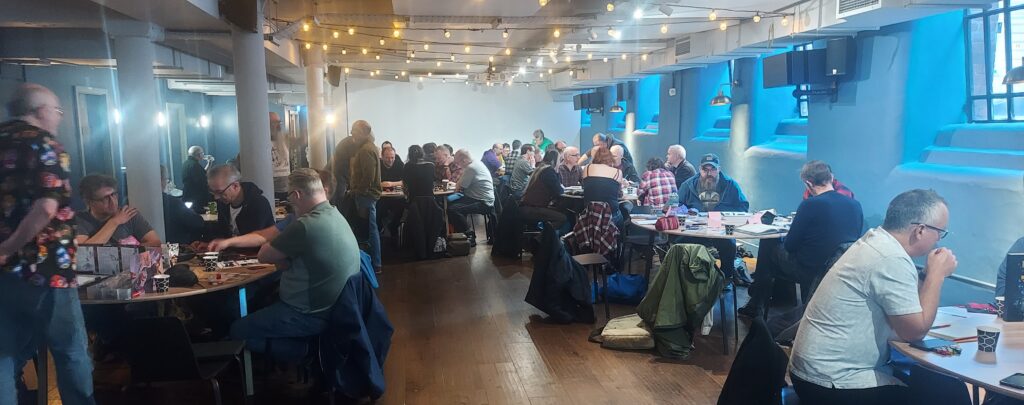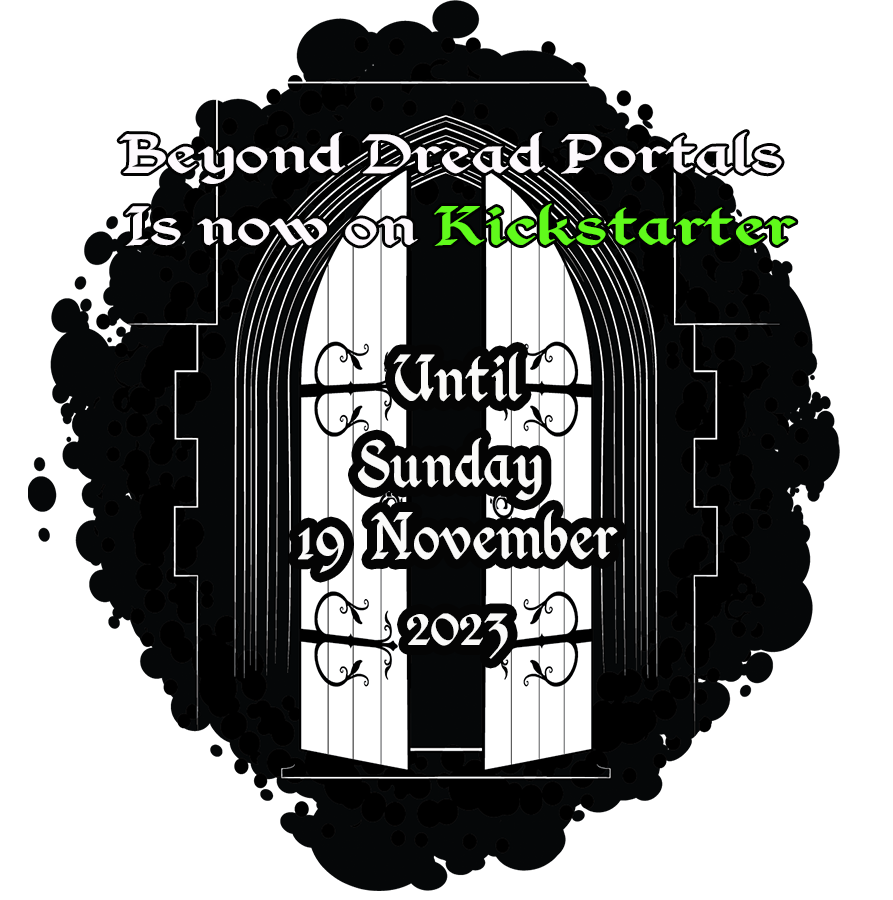Over the weekend, I took this introductory adventure out for a spin at Manchester’s premier Old School convention run by the Grognard Files Podcast.

Grogmeet 2023 in full flow
I had a full table of four players, one of whom Chris (hello 🙂 ) was a backer.
After going through the pre-generated characters, which are included in the main rulebook, and using them to explain the setting and the system, we grabbed coffee and got stuck into it. The game unfolded in three acts.
Act 1 was a gentle stroll around the City of Ys. From the grand Guildhall of the League of Explorers, where there characters, who the players already knew each other, found out that a special treasure hunting license was being issued to go to Erebus, which is normally closed. All they had to do was navigate the ever-shifting streets of Ys and make their way to the Ruby Court. The crimson-clad Judge Vinter gave them the license, which gave them superior treasure rights. 5% taxation upon return to Ys rather than the usual 20%. The players then choose which of the two available Patrons they wanted to back their expedition. This gave them the promise of more rewards, plus a mission to pressure. The liberation of the Fort’s Garrison, who were trapped on Erebus.
Act 2, stepping through the Dread Portal, the characters emerge into the courtyard of Lion Fort. They spent most of this act getting a sense of where they were and what factions were present in the fort. The most important one was the Agent of the Autrach, a skeleton in a gibbet who sinisterly waved hello when the characters arrived. This strange creature is also the gatekeeper of the portal, which is now shut until the characters fulfil their mission and can kill with its mind! After finding out who was who in the fort. they quickly made friends with the Garrison commander, and a plan was forged to kill the Agent, open the Portal and return to Ys with the Garrison.
em>Act 3 was a quick raid into the nearby Mushroom Caves and executing the plan to free the Garrison and get home. While the other acts had leaned heavily into roleplaying with all the fantastical NPCs they met, with the occasional skill test, this act was all about action. Sneaking past the ruined colony and its undead farmers, ambushing the goblins in the entrance cave – which escalated into a quick combat. Then, seizing the magic Spear of Dawn from the Goblin’s leader and using it to set the fungus-based creature on fire. Rushing back to the fort, sneaking up on the Agent, thrusting the burning Spear of Dawn, a potent anti-undead weapon, into its bones killing it. Finally, the group’s wizard opened the portal, and back to Ys, where they squared it all with Judge Vinder.
Phew. And this is only one way through the adventure, which is a mini-sandbox. I’m highly happy with its initial outing and overjoyed to find when I got home that it has been funded and will be available to backers as a stretch goal.
Beyond Dread Portals is in its final week over at Kickstarter and is available to back until Sunday 19th November.







